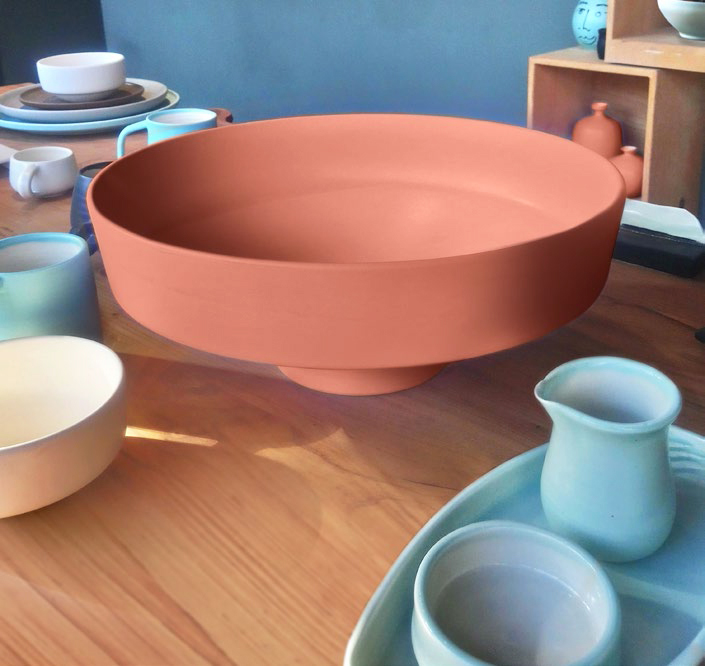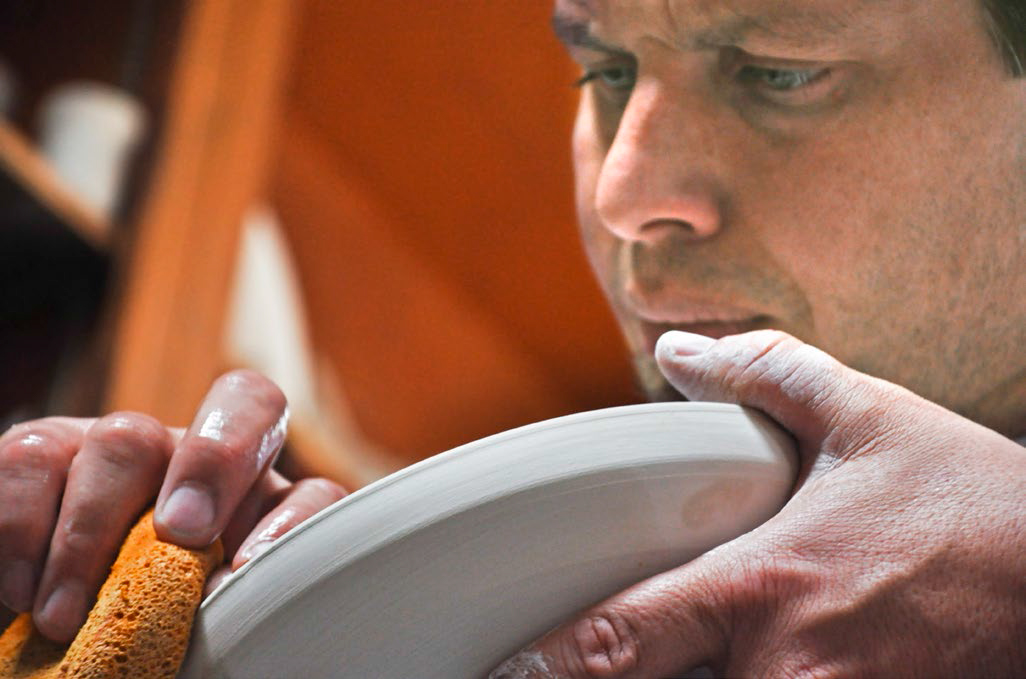Tabletop Theater - Page 2
 |
|
|
 |
|
|
 |
|
|
 |
 |
 |
|
|
Jered sees chefs as fellow artists, and tries to push them even farther. He's done that by putting on a theatrical event of his own, 'Clay with Your Food.'
Jered and Sarah, who does the business side of things, invited chefs to cook dishes in one of Jered's 1,000-degree kilns, to plate their dishes on unique sculptural ceramics, and to throw a pot themselves. None of the chefs had ever thrown a pot on a wheel. "A few of them took to it right away," Jered recalls.
Jered and Sarah put on the one-night 'Clay with Your Food' gathering for three years, bringing in poets and musicians, and charging the public to watch and eat.
"I just wanted to poke their creative nerve a little bit," Jered says. "I would make up a sculptural piece and ask chefs to plate on it. The idea was to push the chefs into something they wouldn't normally do, that would be more theatrical."
Jered, who works with one assistant and an apprentice, is known for throwing pots quickly, one 'Jack' after another 'Jack' after another. Does it get tedious?
Nope.
"I'm not doing the same thing over and over. Even if I'm doing a series of 450 bowls, the whole time I'll be refining them," he says.
"Weight is a really integral part of pottery," he says, "the balance of the forms and the weight. Doing that, and getting all the lines right, that's a considerable task."
While Jered goes for drama at times, his California line is unassuming, quiet in look, and modern in its emphasis on function. If the line suggests the work of Heath Ceramics, the much larger Sausalito firm founded in 1948 by Edith Heath, that's not surprising.
Jered, who grew up in South Dakota, worked at Heath for seven years and learned much there about production and the business of ceramics, and California style. "I started to get a sense of what the history of design here [in California] was in ceramics. The matte glazes, the simple forms, stuff like that," he says.
Sarah, who's from North Dakota, attributes many of her husband's qualities to his rural Dakota background, where he learned "that you have to work with what you've got. He's very good using what he has around him to solve problems. If he needs a tool to perform a certain function, nine times out of ten he will make that tool himself."
Jered grew up with horses and was a rodeo rider from high school till age 30, often riding bareback. Dangerous, no?
"Of course! That's the point, isn't it?" Jered says. "It's like becoming a potter. Who does that, for crying out loud? What kind of risky, friggin' business is that?"
His art and ceramics education happened at Minnesota State and Colorado State, where his teachers included some legends. In Minnesota, Warren MacKenzie focused on the Mingei style. "There was a philosophy behind it of making stuff economically, making stuff quickly, and allowing the story of the process to show up in the pieces," Jered says.
In Colorado the fine art ceramicist Paul Soldner became a mentor, and Jered got to know the abstract potter Peter Voulkos.
Over the years Jered has pursued several trades. He's worked construction, as a ranch hand, as the gateman at a horse track, and as an office manager for H&R Block. He served stateside in the Navy. But all the while he stuck to clay.
It was when a 'tax lady' he'd consulted looked at how little money Jered had earned in the tax year and told him, "Oh, honey, you don't have to file taxes," that he decided to drop pots.
"I made some really nice pots, what I thought were my best, and I gave them all away to my family at Christmas, and I thought, I have to do something else. This just has to be my hobby."
Still…still…one more try?




